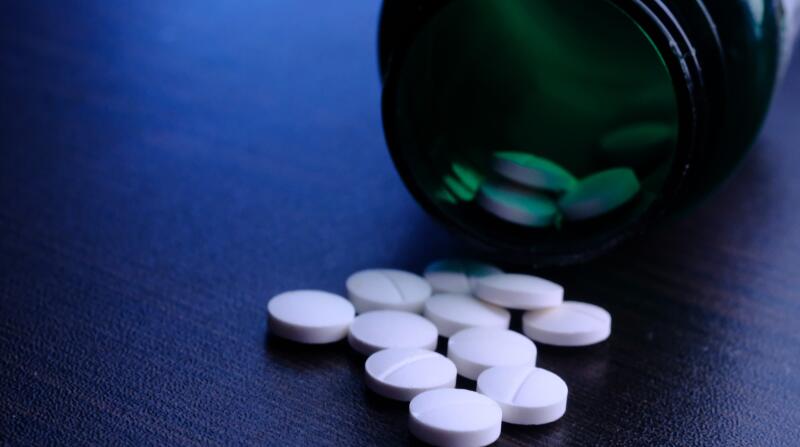7 Things to Know About Osteoporosis

Medically Reviewed By William C. Lloyd III, MD, FACS
Written By Wyatt Myers on November 8, 2020
-
 1. Osteoporosis weakens bones.Osteoporosis is a serious bone disease that can have long-lasting health effects. The disease weakens bones. They become porous and brittle. That makes them more likely to break. Who's at risk? And what can you do to prevent this disease, or lessen its effects? Read to discover important facts about osteoporosis.
1. Osteoporosis weakens bones.Osteoporosis is a serious bone disease that can have long-lasting health effects. The disease weakens bones. They become porous and brittle. That makes them more likely to break. Who's at risk? And what can you do to prevent this disease, or lessen its effects? Read to discover important facts about osteoporosis. -
 2. Millions of people are at risk.Osteoporosis affects millions of Americans. In fact, U.S. health officials say that about 40 million people either have the disease or are likely to get it because they have low bone mass. That means their bones are thin and weak. As people age, their chances of developing osteoporosis go up. Almost 23 million women and 12 million men older than 50 have a condition called osteopenia. That means their bones are weaker than normal, but not quite weak enough to qualify as osteoporosis. However, that condition can progress to osteoporosis.
2. Millions of people are at risk.Osteoporosis affects millions of Americans. In fact, U.S. health officials say that about 40 million people either have the disease or are likely to get it because they have low bone mass. That means their bones are thin and weak. As people age, their chances of developing osteoporosis go up. Almost 23 million women and 12 million men older than 50 have a condition called osteopenia. That means their bones are weaker than normal, but not quite weak enough to qualify as osteoporosis. However, that condition can progress to osteoporosis. -
-
 3. Osteoporosis affects both men and women.Some people think only older women need to worry about osteoporosis. That's not true. Osteoporosis is more common in women than men. They're at greater risk after menopause because they have less of the hormone estrogen. Also, women usually have smaller bones, and that's another risk factor. Women's bones also get thin at a faster rate than men's bones do. But men are at risk, too. About 20% of Americans with osteoporosis or osteopenia are men.
3. Osteoporosis affects both men and women.Some people think only older women need to worry about osteoporosis. That's not true. Osteoporosis is more common in women than men. They're at greater risk after menopause because they have less of the hormone estrogen. Also, women usually have smaller bones, and that's another risk factor. Women's bones also get thin at a faster rate than men's bones do. But men are at risk, too. About 20% of Americans with osteoporosis or osteopenia are men. -
 4. Age is not the only risk factor.You can’t do anything about risk factors such as aging. You also can’t control your family history or your ethnic background—people of non-Hispanic white and Asian ethnic backgrounds have the greatest risk. Nor can you control the size of your bones and body (not weight). But lots of other factors also make osteoporosis more likely. And, you can do something about them. For instance, you could stop smoking and drink less alcohol. You could eat more foods that are good for your bones because they are high in calcium and vitamin D. You also could exercise. That makes your bones stronger. And, you could ask your doctor if any medicines you take might affect your bones. Some do.
4. Age is not the only risk factor.You can’t do anything about risk factors such as aging. You also can’t control your family history or your ethnic background—people of non-Hispanic white and Asian ethnic backgrounds have the greatest risk. Nor can you control the size of your bones and body (not weight). But lots of other factors also make osteoporosis more likely. And, you can do something about them. For instance, you could stop smoking and drink less alcohol. You could eat more foods that are good for your bones because they are high in calcium and vitamin D. You also could exercise. That makes your bones stronger. And, you could ask your doctor if any medicines you take might affect your bones. Some do. -
 5. Osteoporosis can be hard to detect.Osteoporosis is a silent disease. It can develop and you don't notice anything. You might not know that you have weak bones until a bone breaks. However, your doctor can order a screening test to find the disease before that happens. The test is painless. It's like an X-ray with far less radiation exposure. It measures your bone mineral density (BMD). Some people have these tests as part of their annual checkup. People at higher risk sometimes get them more often.
5. Osteoporosis can be hard to detect.Osteoporosis is a silent disease. It can develop and you don't notice anything. You might not know that you have weak bones until a bone breaks. However, your doctor can order a screening test to find the disease before that happens. The test is painless. It's like an X-ray with far less radiation exposure. It measures your bone mineral density (BMD). Some people have these tests as part of their annual checkup. People at higher risk sometimes get them more often. -
 6. Osteoporosis cannot be cured.You cannot replace bone mass lost to osteoporosis. However, you can protect the bone that remains. Your doctor can help you set up a plan to prevent future problems, like broken bones. You need to make sure you get enough calcium and vitamin D. The best way is through foods, but supplements can help, too. You may also need to do more weight-bearing exercise. That's activity that works your muscles and bones against gravity. Walking, climbing stairs, and lifting weights are examples. And, you will need to be careful to keep from falling. Get rid of area rugs. Make sure walkways are well lit. Put grab bars in the bathroom.
6. Osteoporosis cannot be cured.You cannot replace bone mass lost to osteoporosis. However, you can protect the bone that remains. Your doctor can help you set up a plan to prevent future problems, like broken bones. You need to make sure you get enough calcium and vitamin D. The best way is through foods, but supplements can help, too. You may also need to do more weight-bearing exercise. That's activity that works your muscles and bones against gravity. Walking, climbing stairs, and lifting weights are examples. And, you will need to be careful to keep from falling. Get rid of area rugs. Make sure walkways are well lit. Put grab bars in the bathroom. -
-
 7. Medication might be an option.The main goal in treating osteoporosis is to keep bones from breaking. Some drugs can help do that. They keep weak bones from getting weaker and more brittle. For instance, doctors often prescribe bisphosphonates. These drugs slow down the process of bones getting weaker. They come as pills that you take every week or every month. Or, they can be infused. That means the drug is put directly into your veins. This would be done every few months or maybe just once a year. Other drugs also are available. Ask your doctor whether medication might help keep your bones as healthy as possible.
7. Medication might be an option.The main goal in treating osteoporosis is to keep bones from breaking. Some drugs can help do that. They keep weak bones from getting weaker and more brittle. For instance, doctors often prescribe bisphosphonates. These drugs slow down the process of bones getting weaker. They come as pills that you take every week or every month. Or, they can be infused. That means the drug is put directly into your veins. This would be done every few months or maybe just once a year. Other drugs also are available. Ask your doctor whether medication might help keep your bones as healthy as possible.
7 Things to Know About Osteoporosis









